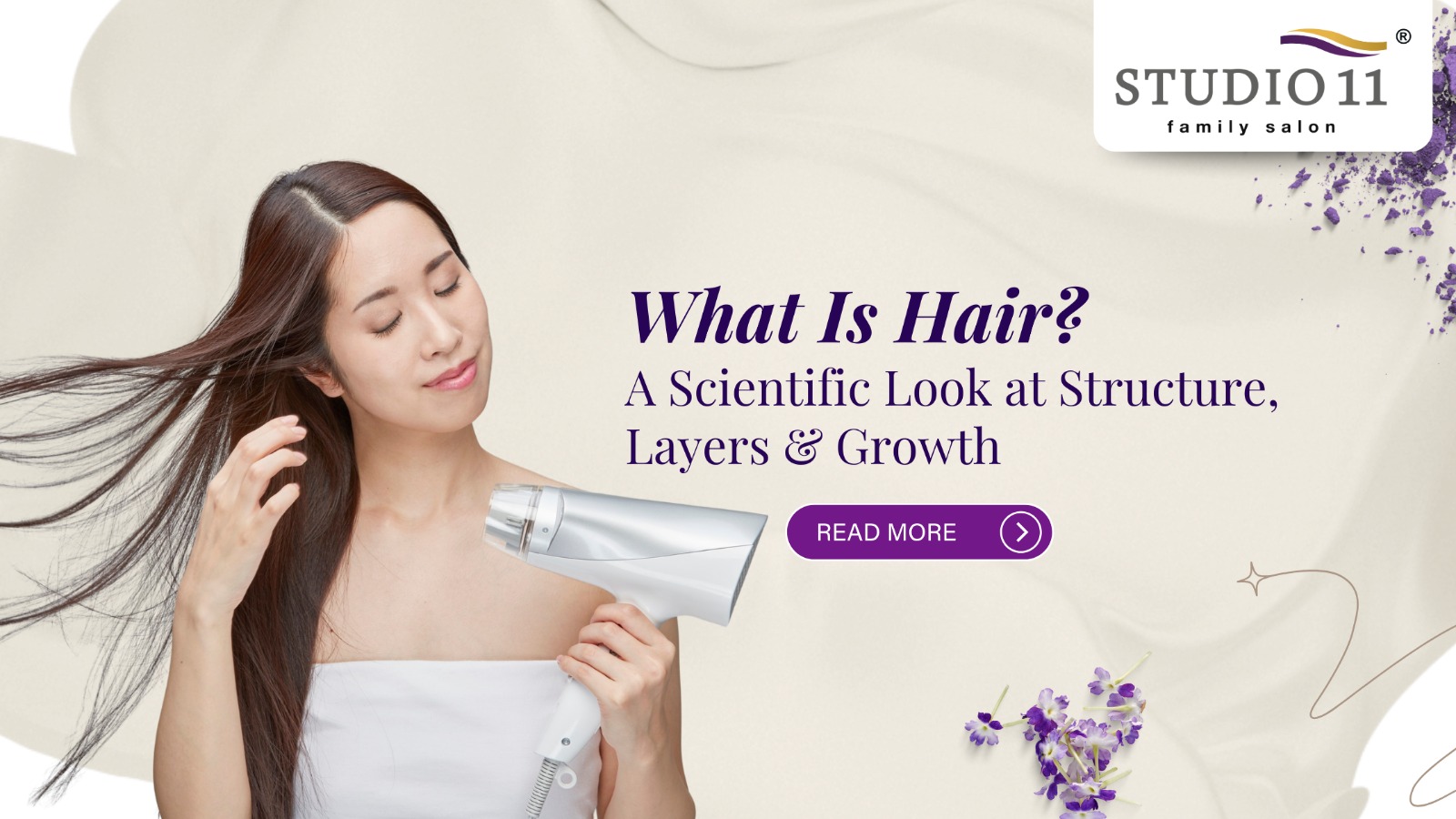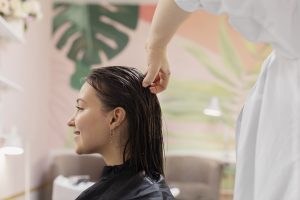We often treat our hair as just a style statement—something to cut, colour, or straighten. But hair is far more than what we see in the mirror. It’s a complex biological structure made of proteins, lipids, and pigments that grows, rests, and sheds in a well-orchestrated cycle. Understanding the science of hair helps us take better care of it and appreciate why professional treatments can make such a big difference.
What Exactly Is Hair?
The second layer of our skin, the dermis, contains follicles from which hair, a protein filament, grows. It is made primarily of keratin, the same protein that builds nails and skin. Each strand of hair is non-living once it emerges from the scalp—but the follicle at its base is alive and actively growing.
On average, humans have 80,000 to 150,000 hairs on their scalp, and each strand grows about 1 cm per month.
The Structure of Hair: 3 Layers
Every strand of hair has a layered design that determines its strength, elasticity, and shine.
- Cuticle (The Protective Layer)
- The outermost layer is made of overlapping keratin cells (like roof shingles).
- Acts as a shield against environmental damage.
- Cortex (The Strength & Colour Layer)
- The thickest layer of the hair shaft.
- Rich in keratin fibres and melanin pigments.
- Gives hair its strength, elasticity, and colour.
- Most salon treatments (like Hair Botox or Keratin) target the cortex to repair internal damage.
- Medulla (The Core)
- The innermost, hollow layer.
- Present mostly in thick, coarse hair and often absent in fine hair.
- Its function is still debated, but it may help with flexibility and heat insulation.
The Hair Growth Cycle
Hair doesn’t grow continuously—it follows a natural cycle with 3 stages:
- Anagen Phase (Growth Stage – ~1000 days / 2–7 years)
- Active growth stage.
- Hair can grow up to 1000 days before shifting phases.
- Catagen Phase (Transition Stage – ~10 days)
- A short, transitional phase.
- Hair detaches from the blood supply but stays in place.
- Only 1–2% of hair is in this stage.
- Telogen Phase (Resting & Shedding Stage – ~100 days / 3–4 months)
- Hair rests and then naturally sheds.
- About 10–15% of hair is in this stage.
- Losing 50–100 hairs daily is normal.
Why Does This Science Matter?
Understanding hair’s biology explains why it gets damaged and why treatments are necessary.
- Cuticle damage from heat styling, coloring, or UV → leads to frizz, tangles, and dullness.
- Cortex weakening → causes thinning, split ends, and loss of elasticity.
- Nutrient imbalance at follicles → slows anagen growth phase, leading to hair fall.
This is where professional care like at Studio 11 family salon in Pashan, Pune comes in: treatments like Hair Botox, Keratin Therapy, Deep Conditioning, and Scalp Detox restore lost proteins, smooth the cuticle, and nourish hair back to health.
FAQ
Q1: Does cutting hair make it grow faster or thicker?
No. Hair grows from the follicle beneath the skin, not from the ends. Cutting hair doesn’t affect growth but it does remove split ends, making hair appear healthier and fuller.
Q2: Why do some people have curly hair while others have straight hair?
The curl pattern is determined by the angle at which hair grows and the shape of the hair follicle. While round follicles produce straight hair, oval or asymmetrical follicles produce curls or waves.
Q3: How many hairs do we lose every day?
It is normal to have 50–100 hairs per day during the telogen phase. Stress, poor diet, or problems with the scalp may be the cause of excessive shedding.
Q4: Can damaged hair repair itself naturally?
Since the visible strand of hair is non-living, it cannot repair itself. However, deep treatments can temporarily rebuild, coat, and protect the shaft while improving the scalp’s environment for healthier new growth.
Q5: Why do we need hair treatments if hair is already dead?
While hair shafts are non-living, cuticles can be smoothed, and cortex damage can be reinforced with protein, vitamins, and moisture treatments. This improves texture, shine, and manageability while protecting hair from further breakage.








